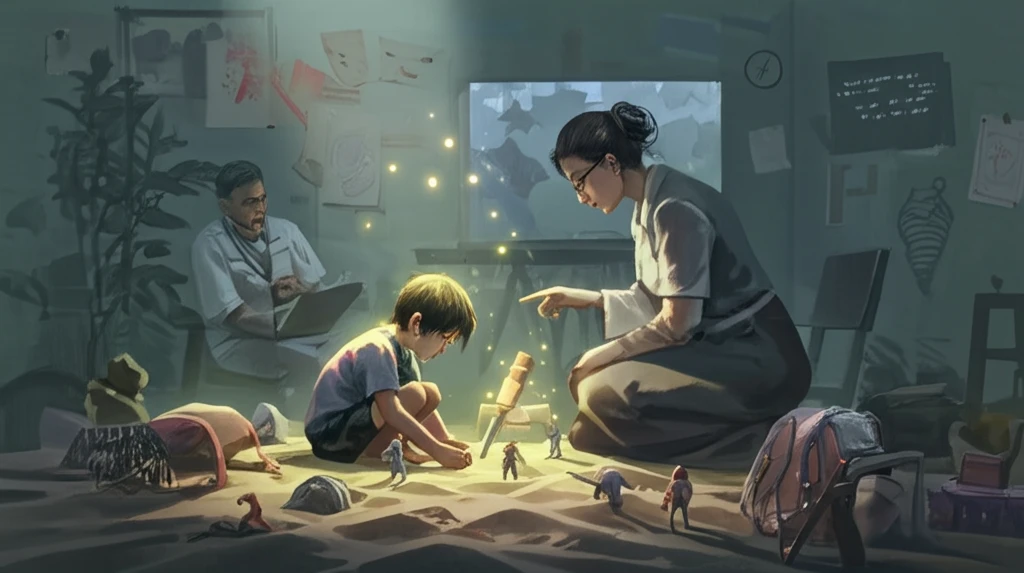
Decoding Childhood Trauma: How Play Therapy Can Help
"Unlock the secrets hidden in children's play to understand and heal from psychological trauma with our in-depth guide to post-traumatic play therapy."
Childhood trauma can leave deep scars, often hidden beneath the surface. While traditional therapy relies on verbal communication, young children may lack the language to express their experiences directly. This is where post-traumatic play therapy steps in, offering a unique and powerful way to access and address these hidden wounds.
Post-traumatic play refers to the way children integrate traumatic experiences into their play. It's not just about having fun; it’s a window into their inner world, revealing their fears, anxieties, and coping mechanisms. By understanding the nuances of this type of play, therapists and caregivers can provide crucial support and guidance.
This article explores the theoretical foundations of post-traumatic play, providing practical insights into how it can be used to assess and treat childhood trauma. We'll delve into the key characteristics of post-traumatic play, examine the different approaches to therapy, and offer guidance on how to create a safe and supportive environment for healing.
What is Post-Traumatic Play and Why Does It Matter?

Trauma overwhelms a child's capacity to cope, leading to a sense of helplessness and disruption. These experiences can manifest in various ways, affecting their behavior, emotions, and development. Post-traumatic play emerges as a natural response, a way for children to process what happened and regain a sense of control.
- Repetition: Compulsive reenactment of the trauma or related themes. The play may seem stuck, with the child unable to move beyond certain actions or scenarios.
- Literalism: The play may directly mirror the traumatic event, with little symbolic representation. It can be very concrete and realistic, reflecting the child's difficulty in processing the experience on an emotional level.
- Emotional Intensity: The play may be characterized by heightened emotions, such as fear, anger, or sadness. The child may become easily agitated or distressed during the play.
- Lack of Resolution: Unlike typical play, which often leads to a sense of completion, post-traumatic play may lack a clear ending or resolution. The child may remain stuck in the traumatic experience, unable to find a sense of closure.
- Intrusiveness: Traumatic themes may intrude into the child's play, even when they are engaged in other activities. The trauma may be ever-present, coloring their interactions and experiences.
Unlocking Healing Through Play
Post-traumatic play offers a unique window into the inner world of traumatized children. By recognizing the signs and understanding the underlying dynamics, we can provide effective support and facilitate healing. Play therapy, guided by a trained therapist, can help children process their experiences, develop coping mechanisms, and build resilience. It is a powerful tool in helping children reclaim their joy and rediscover their ability to thrive.
